The Weekend Australian album reviews, October 2012: Collarbones, Tame Impala, The Key Of Sea
Three album reviews for The Weekend Australian, published in October.
++
What we have here is an original and compelling take on pop music viewed through the lenses of electronica, R&B and hip-hop.
Duo Collarbones – Adelaide-based Travis Cook, and Sydney local Marcus Whale – don’t care much for genre constraints. It’s the best thing they’ve got going for them. Musical innovation is truly rare; there’s no one in Australia writing material like this. Their point of difference is technology-enabled: each track is built on intricate collages of instrumental samples cut, copied and pasted on laptops. Whale’s voice, by turns soulful and ethereal, narrates these stark soundscapes.
It’s a concept album, of sorts: the lyrics focus on adolescent love and fallen pop idols. The title track is a fine example of the unconventional Collarbones songwriting style: over a lazy backbeat, what sounds like stringed instruments are sped up, slowed down and mashed together to beguiling effect. A verbose verse by Melburnian rapper HTML Flowers contrasts well against Whale’s clear voice.
The following track, ‘Too Much’, is backed by Cook’s booming, bass-heavy beat; Whale unironically embraces a big, melodic, 1990s-era boy band-style chorus. It could easily be a radio hit. The approach would be a gimmick if the songs weren’t so good.
The duo’s debut album, last year’s Iconography, was an intriguing introduction but an unsatisfying collection in whole: too many half-sketched ideas, too few proper songs. Die Young is a fully realised follow-up, one that sees the pair living up to their potential. It may be one of the stranger pop albums you’ll hear this year, but you won’t regret your time spent with these 10 fine tracks.
Label: Two Bright Lakes
Rating: 4 stars
++
The trouble with releasing a killer debut album is that it’s much harder to impress with the follow-up.
This is the situation in which Perth-based quartet Tame Impala finds itself, two years after Innerspeaker, a standout collection of retro-tinged rock songs written and produced almost entirely by singer Kevin Parker.
That formula hasn’t changed on Lonerism: the young maestro again handles vocals and all instrumentation (in concert, he’s assisted by three bandmates). The main point of difference is that these 12 tracks were recorded in several locations while the band toured the world. And it shows: compared with Innerspeaker‘s lush, enveloping production, there’s much less cohesion between ideas here.
Stylistically, Parker has added swaths of synthesisers to Tame Impala’s celebrated psychedelic rock tones. These sounds fill out the space between intricate basslines, clattering percussion, psychedelic guitars and Parker’s spaced-out, aloof voice. Heavy piano chords form the basis of first single ‘Apocalypse Dreams’, while follow-up ‘Elephant’ is built on a pulsating rhythm that leads into a glorious, snaking guitar solo.
Although Innerspeaker was stacked with stand-out tracks, the same can’t be said for Lonerism, which contains just a handful; ‘Mind Mischief’ and ‘Keep on Trying’ are among the best here.
There’s the aforementioned trouble again: once a reputation for strong songwriting has been established, anything less than great is disappointing. Lonerism doesn’t elicit that particular emotion — it’s a good record, after all — but it does hint at better things to come. With Parker’s brilliant imagination, musical abilities and resourcefulness, it seems that anything’s possible.
Label: Modular
Rating: 3.5 stars
++
Various Artists – The Key Of Sea Volume 2
Some might say rock musicians are more readily associated with egotism than altruism, yet this collection is the second in a series that seeks to buck that stereotype.
By pairing well-known Australian artists with refugee musicians, the project’s organisers, civil rights advocate Hugh Crosthwaite and Nick O’Byrne from the Australian Independent Record Labels Association, hit on a winning idea with the release of Key of Sea Volume 1 in 2010.
Like its predecessor, Volume 2 is a fine snapshot of contemporary Australian music. Pop, rock, hip-hop, jazz and folk musicians rub up against one another; disparate musical ideals working in tandem towards a common goal of sharing untold stories.
The Australian collaborators are names Triple J listeners will recognise, with a handful of elder statesmen (Paul Kelly, Kim Salmon, David Bridie) thrown in. The refugee collaborators add their cultural influences to each composition: traditional Kurdish stringed instruments, bouzouki and Filipino choir masters all make delightful appearances.
Darwin-based electronic soul duo Sietta teams with Pacific Island group Sunameke on ‘Open Hands’, which explores the concept of mixed races and cultural diversity; at the other end of the musical and thematic spectrum, Salmon pairs with radio presenter Waleed Aly to write ‘No One Cares’, a noisy rock tune with sardonic lyrics featuring the bureaucratic doubletalk associated with seeking asylum in this country.
All 11 songs work well: there are a couple of bona fide pop hits in ‘Silence of the Guns’ (led by Jinja Safari) and Clubfeet’s ‘Islands’. The diversity of sounds and stories is reason enough to lend your ears to The Key of Sea. That the songs are compelling and polished is a bonus.
Label: MGM
Rating: 3.5 stars
 After exploring his upbringing in the 2010 comic memoir The Family Law, Benjamin Law turns to another topic close to his heart. An Australian of Chinese ancestry, he sets out to explore attitudes to homosexuality in seven Asian countries.
After exploring his upbringing in the 2010 comic memoir The Family Law, Benjamin Law turns to another topic close to his heart. An Australian of Chinese ancestry, he sets out to explore attitudes to homosexuality in seven Asian countries. Four years between albums is plenty of time for younger competitors to snatch the crown from Australia’s electronic music kings.
Four years between albums is plenty of time for younger competitors to snatch the crown from Australia’s electronic music kings.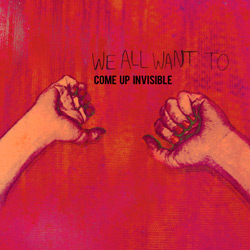 This is a messy album in the best way possible. The music created by Brisbane four-piece We All Want To swings back and forth between charming indie pop and rock with jagged edges.
This is a messy album in the best way possible. The music created by Brisbane four-piece We All Want To swings back and forth between charming indie pop and rock with jagged edges.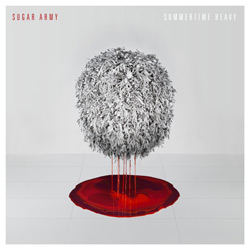 Through change comes artistic progress. On its second album, Perth-based rock act Sugar Army has streamlined the sound out of necessity: the band’s bassist joined fellow Perth group Birds of Tokyo, reducing the quartet to a trio.
Through change comes artistic progress. On its second album, Perth-based rock act Sugar Army has streamlined the sound out of necessity: the band’s bassist joined fellow Perth group Birds of Tokyo, reducing the quartet to a trio. Die! Die! Die! – Harmony
Die! Die! Die! – Harmony 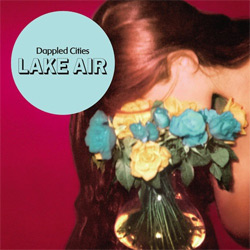 Four albums into a career that blossomed with the release of second LP Granddance in 2006, Sydney quintet Dappled Cities here present their most accomplished collection. Granddance brought the band into the national consciousness via a string of outstanding singles; Lake Air is a complete work, one so good it deserves to take Dappled Cities much further.
Four albums into a career that blossomed with the release of second LP Granddance in 2006, Sydney quintet Dappled Cities here present their most accomplished collection. Granddance brought the band into the national consciousness via a string of outstanding singles; Lake Air is a complete work, one so good it deserves to take Dappled Cities much further. I didn’t know this until I read The Boy Who Loved Apples, in which first-time author Amanda Webster takes on twin challenges: to write a confessional account of the most difficult time of her life and to educate readers about the complexities of an illness few understand intimately, especially as it applies to boys. She succeeds on both counts.
I didn’t know this until I read The Boy Who Loved Apples, in which first-time author Amanda Webster takes on twin challenges: to write a confessional account of the most difficult time of her life and to educate readers about the complexities of an illness few understand intimately, especially as it applies to boys. She succeeds on both counts.
 The young man at the heart of this band has been worth watching since he emerged in late 2009. Jonathan Boulet’s self-titled, self-recorded, self-produced debut was bursting at the seams with ideas (he played all the instruments and sang, too.) Boulet’s songwriting didn’t always hit the mark, but he certainly showed promise.
The young man at the heart of this band has been worth watching since he emerged in late 2009. Jonathan Boulet’s self-titled, self-recorded, self-produced debut was bursting at the seams with ideas (he played all the instruments and sang, too.) Boulet’s songwriting didn’t always hit the mark, but he certainly showed promise.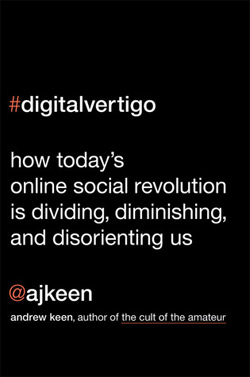 In Digital Vertigo [pictured right], Anglo-American entrepreneur Andrew Keen takes a critical stance against the technologists behind social networking tools such as Facebook and Twitter, for reasons exemplified in the book’s subtitle. Keen knows his topic from the inside: on the cover the title is presented as a Twitter hashtag and the author’s name as
In Digital Vertigo [pictured right], Anglo-American entrepreneur Andrew Keen takes a critical stance against the technologists behind social networking tools such as Facebook and Twitter, for reasons exemplified in the book’s subtitle. Keen knows his topic from the inside: on the cover the title is presented as a Twitter hashtag and the author’s name as  Conversely, British novelist Nick Harkaway tries his hand at long-form nonfiction for the first time in The Blind Giant [pictured right], and strikes on a narrative that immediately grips the reader. Using tight language and evocative descriptions, Harkaway’s introduction is a nightmare vision of a dystopian, tech-led society where “consciousness itself, abstracted thought and a sense of the individual as separate from the environment” are all withering away. A contrasting vision of a “happy valley” follows, and is just as realistic and compelling.
Conversely, British novelist Nick Harkaway tries his hand at long-form nonfiction for the first time in The Blind Giant [pictured right], and strikes on a narrative that immediately grips the reader. Using tight language and evocative descriptions, Harkaway’s introduction is a nightmare vision of a dystopian, tech-led society where “consciousness itself, abstracted thought and a sense of the individual as separate from the environment” are all withering away. A contrasting vision of a “happy valley” follows, and is just as realistic and compelling.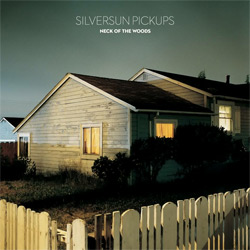 Where many rock bands fail, Silversun Pickups succeed: through effective use of space, volume, melody and harmony, this Los Angeles quartet conjures unique emotions within the listener that make the timeworn combination of guitars, bass, drums and vocals seem fresh.
Where many rock bands fail, Silversun Pickups succeed: through effective use of space, volume, melody and harmony, this Los Angeles quartet conjures unique emotions within the listener that make the timeworn combination of guitars, bass, drums and vocals seem fresh. These 10 sparsely adorned songs represent a significant shift for Perth-based songwriter Joe McKee, who fronted the West Australian quartet Snowman for eight years until their amicable split in 2011.
These 10 sparsely adorned songs represent a significant shift for Perth-based songwriter Joe McKee, who fronted the West Australian quartet Snowman for eight years until their amicable split in 2011. What we now take for granted once existed only on the fringes of popular music.
What we now take for granted once existed only on the fringes of popular music.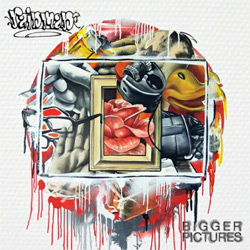 Too often, young Australian rappers fall into the same lyrical pitfall: with little life experience to speak of, they instead take the dubious advice of “write what you know” too literally by couching their artistry in recording alcohol and drug-fuelled tales ad nauseam.
Too often, young Australian rappers fall into the same lyrical pitfall: with little life experience to speak of, they instead take the dubious advice of “write what you know” too literally by couching their artistry in recording alcohol and drug-fuelled tales ad nauseam.